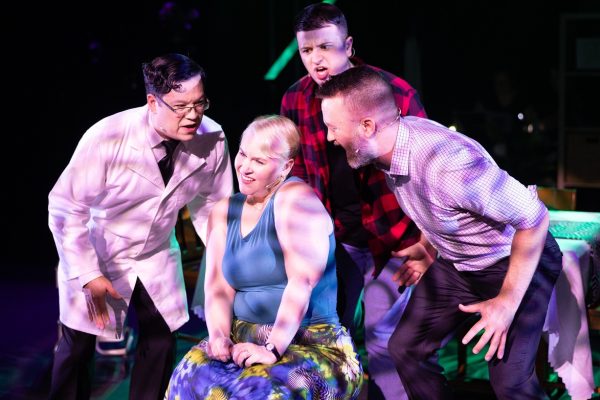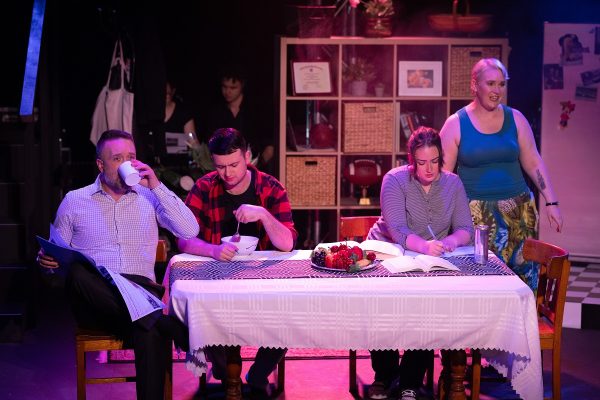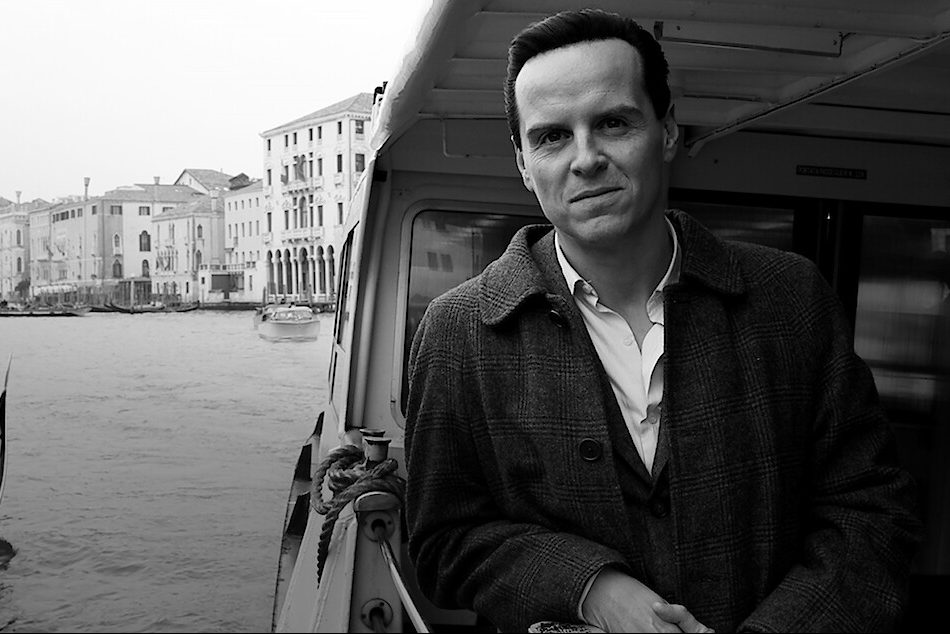
Musical Theatre/ “Next to Normal”, Queanbeyan Players. At Belconnen Community Theatre until February 24. Reviewed by BILL STEPHENS.
Queanbeyan Players’ production of the excoriating chamber musical Next to Normal received an almost hysterical reception at its opening in the Belconnen Community Theatre on Friday night.
When it premiered on Broadway in 2009, Next to Normal won three Tony Awards and a Pulitzer Prize for drama.
With a book and lyrics by Brian Yorkey and music by Tom Kitt, Next to Normal follows the experiences of an outwardly normal family. Dan’s an architect; his wife Diana rushes to pack lunches, pour cereal and make sandwiches (on the floor). Their son and daughter, Gabe and Natalie, are bright wise-cracking teens.
They appear to be a typical family but their lives are anything but normal, because the mother, Diana, has been battling worsening bipolar disorder for 16 years.
The musical explores the effects that managing Diana’s illness has on her family. With its challenging content dealing with grief, depression, self-harm, suicide, drug abuse and the ethics of modern psychiatry, it demands strongly committed performances from its cast. And because 90 per cent of the dialogue is sung, it needs an ability to express complex psychological reactions convincingly through song.

Queanbeyan Players have assembled an accomplished cast of excellent singer/actors who have obviously devoted considerable time into perfecting these requirements.
In the central role of the mother, Diana, Sarah Hull gives a luminous performance, successfully capturing Diana’s frustrations at her predicament and her growing suspicions about the efficacy of her psychiatric treatments.
Dave Smith as Diana’s loving, but increasingly perplexed husband, Dan, fascinates with his touching and carefully nuanced depiction of Dan’s gradual slide into defeat with the realisation that Diana may never overcome her challenges.
Kara Murphy is totally convincing as their over-achieving daughter, Natalie, resentful at the attention being given to her mother’s problems, and reluctant to accept the love offered by her slightly dorky, good-natured friend, Henry, charmingly portrayed by John Whinfield.
As their ever-present son, Gabe, the source of most of his family’s problems, Luke Ferdinands supports a powerful presence with a strong performance, and although the differences are hardly obvious, Andrew Finegan brings appropriate dignity and authority to his portrayal of both psychiatrists, Dr. Fine and Dr Madden.
An unusual feature of this musical is the use made of the cello in the musical arrangements. This subtle use of this instrument, beautifully played by Enola Jeffries, to underline melancholy moments was a striking feature of the excellent support provided by Jenna Hinton’s small ensemble, to the excellent singing of the six-member cast, which performed the many solos, duets, and group numbers and negotiated the complex harmonies and different singing styles, with confidence and panache.
Jenna Hinton also designed the setting, but as attractive as this setting was, this was a case where less might have been more. Because, despite its attractiveness, the setting also provided unnecessary clutter, thereby adding an additional overlay of visual complexity to the proceedings, particularly for scenes that occurred outside the kitchen setting.
Director Chris Bennie’s solution to have the actors make premature entries with props, or to take up position on the limited stage space before the preceding scene had finished had the distracting effect of pre-empting the scene, which it was meant to follow.
Despite being a musical, Next to Normal depicts tense intimate moments between the characters that need to be seen by the audience. It is important to see the actor’s faces during these exchanges. Too often on opening night, faces were lost in shadows or lighting being whizzed around the stage.
There are moments in the show when a little razzle-dazzle is required, and these were effectively achieved, but elsewhere intelligent lighting must be used very accurately to achieve a desired effect.
Similarly, no doubt inserted in an effort to lighten the mood and add colour and movement, the choreography by Belinda Hassall often appeared clumsy and unnecessary, where stillness might have been more powerful.
These criticisms apart, Queanbeyan Players deserve commendation for pushing their boundaries with this intelligent, thoughtful and occasionally moving production of an important, contemporary musical.
Who can be trusted?
In a world of spin and confusion, there’s never been a more important time to support independent journalism in Canberra.
If you trust our work online and want to enforce the power of independent voices, I invite you to make a small contribution.
Every dollar of support is invested back into our journalism to help keep citynews.com.au strong and free.
Thank you,
Ian Meikle, editor




Leave a Reply